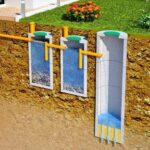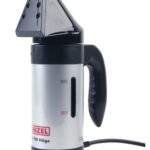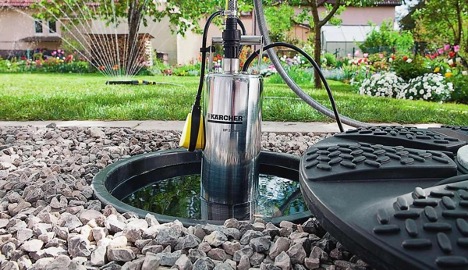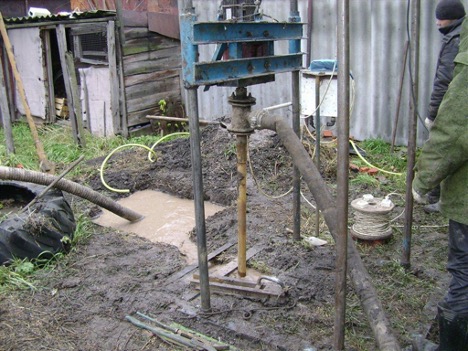How to clean and check a reverse osmosis membrane: DIY restoration
The reverse osmosis membrane is a key element in the reverse osmosis water treatment system, responsible for purifying water from impurities. Over time, contaminants can accumulate on the membrane. This reduces filtration efficiency and quality of purified water. Therefore, regular cleaning and inspection of the membrane is essential to maintain optimal system performance.
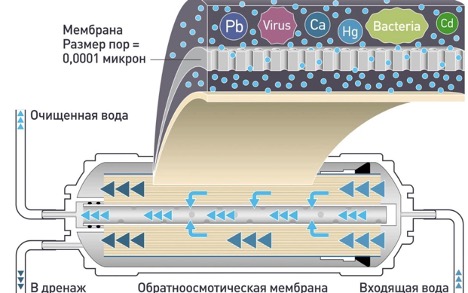
The content of the article
How to clean a reverse osmosis membrane
Cleaning the membrane is a process that you can do yourself. But here it is important to follow certain instructions:
- disconnect the reverse osmosis system from the power supply and close the water supply;
- carefully remove the membrane from the housing, following the manufacturer's instructions;
- rinse the membrane with clean water to remove external contamination;
- prepare the cleaning solution following the manufacturer's recommendations;
- use mild cleaners specifically designed for reverse osmosis membranes;
- place the membrane in the prepared solution for several hours, depending on the degree of contamination.
- After soaking, rinse the membrane thoroughly with clean water and install it back into the housing.
How to check the membrane
How to test a reverse osmosis membrane for efficiency? To do this you need:
- Measure the water quality before and after filtration using a TDS meter. A significant decrease in TDS indicates good membrane condition.
- Estimate the volume of purified water produced. Decreased performance may indicate contamination or wear of the membrane.
Note: A TDS meter measures total dissolved solids.
How to restore a reverse osmosis membrane
In some cases, it is possible to restore the membrane by deep cleaning using stronger cleaning agents. After all, it is the ions that are specifically designed for reverse osmosis membranes. However, it is worth remembering that not all membranes can be restored, and if they are seriously worn, it is better to replace them.
Flushing and Maintenance: Key Steps
To maintain the membrane in working condition, it is necessary to wash it regularly:
- How to rinse a reverse osmosis membrane? Use clean water for this, passing it through the membrane in the opposite direction. This will help remove accumulated dirt and restore productivity.
- Check and replace pre- and post-filters according to manufacturer's recommendations to minimize the risk of membrane contamination.
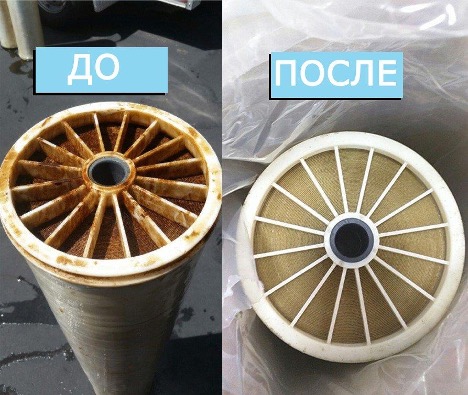
Errors when cleaning the membrane and their consequences
Cleaning your reverse osmosis membrane is a critical process to maintaining the efficiency and longevity of your water treatment system. However, when performing this procedure, you can make mistakes that can lead to serious consequences. Here are some of the most common mistakes and their possible consequences:
- The use of harsh or incompatible chemicals can damage the membrane, reduce its filtration capacity and even lead to the need for replacement.
- Pressurizing the system during flushing can cause physical damage to the membrane, including cracks or ruptures.
- Insufficient rinsing of the membrane after using cleaning agents can leave chemical residues that will subsequently leach into the purified water, degrading its quality.
- Ignoring the manufacturer's cleaning and maintenance recommendations may result in improper cleaning and, as a result, shorten the service life of the membrane.
- Failure to regularly diagnose and maintain the system can not only reduce filtration efficiency, but also lead to deterioration of the membrane.
- If the membrane is temporarily removed from the system and stored incorrectly (dry, at inappropriate temperatures), it may dry out and become damaged.
- Failure to follow safety precautions when working with chemical cleaning agents can not only damage the membrane, but also cause harm to the health of the operator.
Avoiding these mistakes and carefully following the instructions for cleaning and maintaining the reverse osmosis membrane will help ensure long-term, safe operation of the system.
Conclusion
Regular and proper maintenance of the reverse osmosis membrane can significantly extend its service life and ensure consistently high quality of purified water. A DIY ion exchange membrane requires precision and attention to detail. But the effort will pay off in the reliability and efficiency of your reverse osmosis system.

